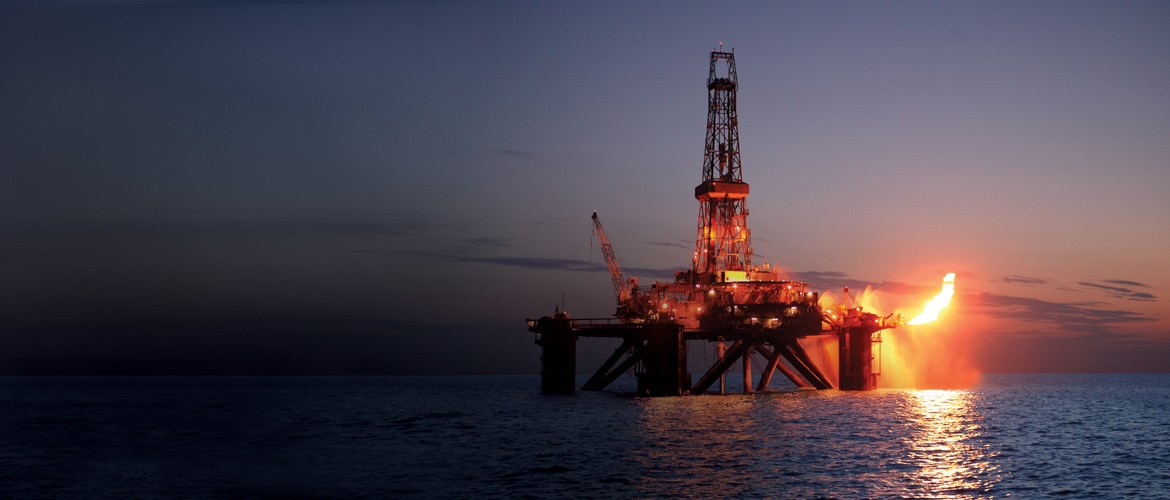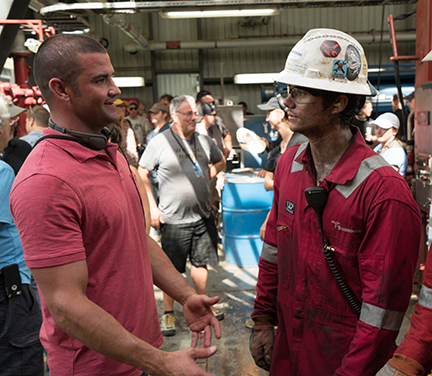By Diane Howard, Ph.D.
Deepwater Horizon was an offshore drilling rig located in the Gulf of Mexico, about 250 miles southeast of Houston. On April 20, 2010, an uncontrollable blowout caused an explosion on the rig, killing 11 crewmen and causing the largest oil spill in U.S. waters. One of the survivors, Caleb Holloway, recently gave a powerful, moving, heart-felt exclusive interview to Dr. Diane Howard about what he experienced in the real explosion of the Deepwater Horizon, a Gulf Coast oil rig. He is depicted as a key character in the movie “Deepwater Horizon,” which is currently at the top of the box office in theaters about this offshore drilling disaster. This redemptive film has real-life heroes and heroines who are role models. This movie and the stories behind the scenes have inspirational power.
With a production budget of about $110 million, the “Deepwater Horizon” movie crew built a huge 85%-scale replica of the rig, with more than three million pounds of steel. Every visual detail of the real Deepwater Horizon was re-created. In an interview with Josh Rottenberg of the LA Times, Caleb Holloway, who is played in the film by Dylan O’Brien, said, “It was actually a little eerie being on set…It was almost like I wanted to go to work, it was so real. But my main goal was to ensure that everybody knew Shane (Roshto) and Adam (Weise) and Karl (Kleppinger) and the guys that passed away. I wanted the actors to know who they were on a personal level.”
Caleb gave the following interview of his personal story with the Deepwater Horizon disaster to Dr. Diane Howard.
DH: What was your job on the oil rig?
CH: I was a floorhand, who with my co-workers, managed drilling equipment on the drill floor.
DH: What were the first signs of trouble to you and your team?
CH: We were in a final testing phase. Our rig drills and gets ready for another rig to bring up the oil. I worked with four hands. I had the radio. We were getting ready for the next crew and were soon to get off the tower. We received a radio message that we were to check the pop-off valve. Adam was the nicest guy and said he would do it. Adam went to the driller shack in my place and ended up losing his life. He went and said there was a problem.
DH: What happened when you and your co-workers understood that you were in a crisis?
CH: I was training Dan. We were cleaning the floor with the vacuum ready. I had gone down a floor to line up the vacuum to take up the mud from the rig floor. I went back up, and that was when the blowout happened from where the drill goes down. Huge equipment was blown up. The radio broke. We could not follow emergency training protocol. I grabbed Dan in the heavy drill room. I tried to get to the drill shack. There was mud first, then gas, then the explosion. I tried a phone and felt enveloped with gas, sea water, mud.
On the set with the real-life Caleb Holloway and Dylan O’Brien, who plays Holloway in the movie, “Deepwater Horizon.” (Photo by David Lee)
DH: How did you and your co-workers respond?
CH: I took Dan to the evacuation deck, but no one was there, yet. The engines starting revving, due to lack of oxygen. The lights went off. We were in total darkness. I had a flashlight. We got knocked around. I was able to get Dan into the number one life boat. At that time, I expected no survivors. I went to the main living quarters. Nothing was recognizable. Others starting coming to the evacuation deck at same time. It was nothing like emergency drills. It was chaos. Some jumped overboard. I was able to help bring out bring out three critically injured. The lifeboats were deployed.
DH: Did the responses of other crew members save lives?
CH: Yes, we were blessed to only lose 11.
DH: Did you sense the presence and grace of God?
CH: It was by God’s grace that the water was amazingly calm that night. It was by God’s grace that the supply vessel was on hand to help. My friend fell into the water that, in some places, had burning oil on top. He broke his leg in the fall, but when I found him with my flashlight—by God’s grace—he was okay. I had in my hard hat the words to “How Great Thou Art.” I had shared the story of those words in my hat with Adam before the disaster. Those words were sung at his memorial service.
DH: Have you experienced PTSD since the event?
CH: I spent the first year in counseling. It is hard to talk about. It has been hard to accept. It has taken a toll on me physically and mentally. But after a year, my faith in God has helped me to accept what happened. I had mixed emotions about helping with the movie, but I wanted to honor those who were lost. Dan and I were the only ones who survived of our team.
DH: Do you think the movie’s dramatization of what happened is realistic?
CH: Yes, the movie is realistic. It was chaotic. It depicts responses accurately. Many from that experience deserve recognition.
DH: How are you doing now?
CH: I still have a hard time talking about it, but I doing well, now. I am a firefighter and have been able to rescue people from burning cars and homes. I have a wonderful family with two precious boys that God gave to my wife and me at the perfect time. I am on a journey of finding meaning in what happened. I want others to know that Jesus Christ is our hope and foundation.
DH: What has helped your recovery?
CH: Counseling, Christian friends, Bible study have all helped.
The “Deepwater Horizon,” tragedy picturizes the worst environmental disaster in U.S. history. Producer and actor Mark Wahlberg says, “It has those elements of a disaster movie, but it’s a true story…you have to make it as realistic as possible. I loved the studio’s courage to make a character-driven adult action movie, where there’s no chance for a sequel.”
To Holloway and the other 114 men and women who experienced the catastrophe 40 miles off the coast of Louisiana, the film is personal and a way to honor their fallen co-workers.
For 87 days after the explosion, millions of barrels of oil flowed into the Gulf of Mexico, causing widespread and lasting harm to wildlife, as well as to the tourist and fishing industries from Texas to Florida. This disaster was followed by an intense government investigation, litigation and political debate. BP was found primarily responsible for the spill and has billions of dollars in penalties and settlements, as well as billions in costs for cleanup costs.
Director Peter Berg has said that the focus of the movie is on the human story in the heart of the catastrophe. “To this day, when people think of Deepwater Horizon, they only think of an oil spill —they think of an oil spill and dead pelicans,” Berg said. “Obviously that oil spill was horrific…but the reality is 11 men died on that rig, and these men were just doing their jobs, and many of them worked hard trying to prevent that oil from blowing out, and it was certainly not their fault. As it pertains to the families of those men who lost their lives, I want them to feel as though another side of that story was presented, so that whenever someone talks about the Deepwater Horizon or offshore oil drilling, people don’t automatically go to ‘oil spills.’ ”
Producer Lorenzo di Bonaventura added, “It’s not an anti-oil movie. It’s not a pro-oil movie. It’s what happened that day.”
Diane Howard, Ph.D. is a diologue, dialect and voice-over coach, as well as a journalist who writes about the role of faith in movies and in the entertainment field. Her website is dianehoward.com.


